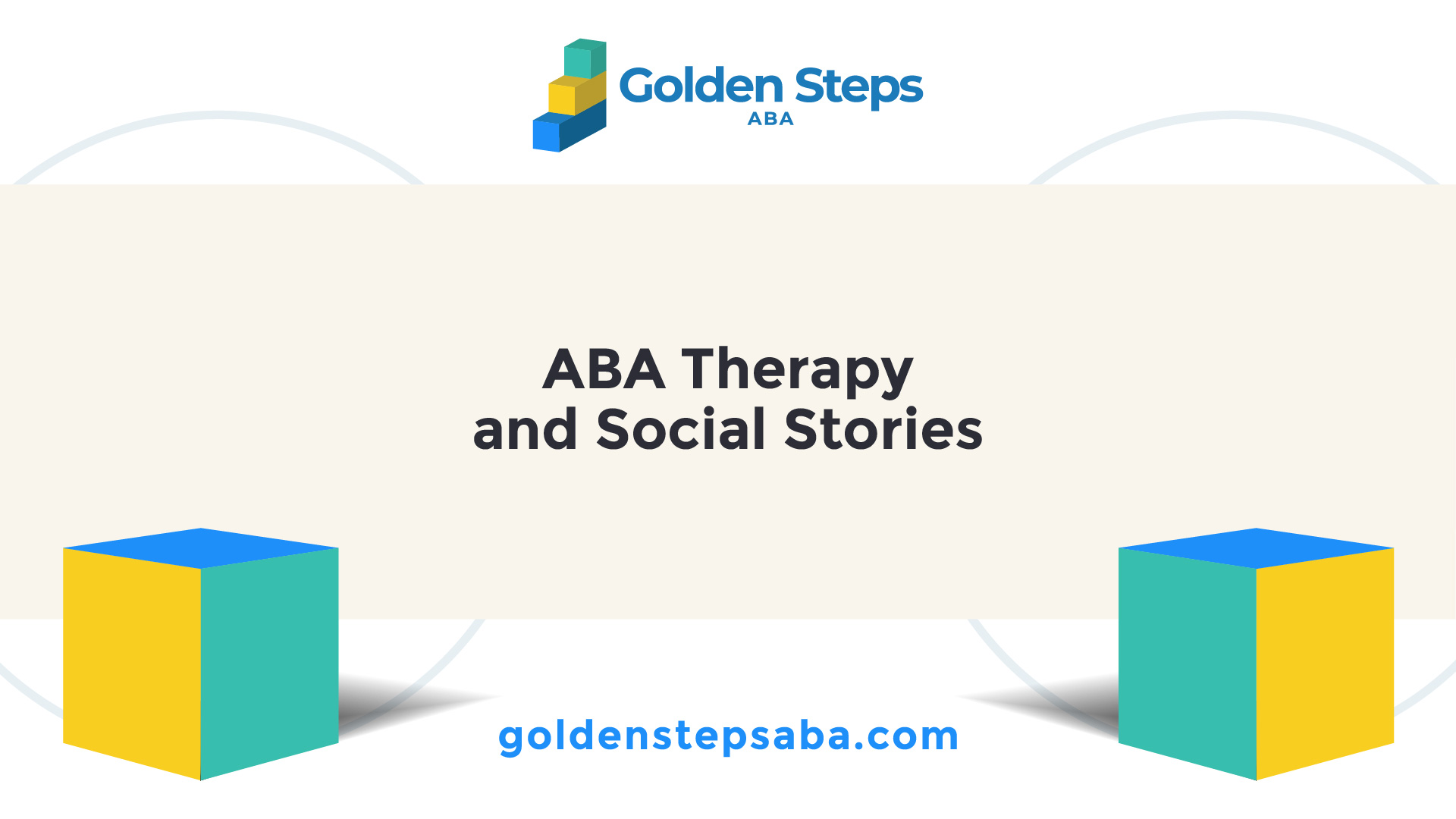Understanding ABA Therapy
Applied Behavior Analysis (ABA) therapy is widely recognized as an effective treatment for individuals with autism and related developmental disorders. This section will provide an overview of the history of ABA therapy and its benefits.

History of ABA Therapy
ABA therapy has been utilized to support children with autism since the 1960s. It is rooted in the principles of behaviorism, which focuses on the idea that behavior can be modified through systematic reinforcement. Over the decades, ABA therapy has evolved to incorporate various methods and techniques tailored to meet the needs of individuals on the autism spectrum. Research indicates that ABA therapy is recognized as an evidence-based best practice treatment by the US Surgeon General and the American Psychological Association, with over 20 studies supporting its effectiveness.
Benefits of ABA Therapy
The benefits of ABA therapy extend beyond merely addressing challenging behaviors. This therapeutic approach focuses on various essential skills that individuals with autism may struggle with, including social development and skill acquisition. The following table summarizes key benefits of ABA therapy:
BenefitDescriptionBehavior ModificationHelps reduce challenging behaviors through reinforcement techniques.Skill AcquisitionPromotes the learning of new skills, such as communication and daily living skills.Social DevelopmentEnhances socialization and interaction with peers.Improved CommunicationEncourages expressive language and effective communication skills.Long-term GainsIntensive ABA therapy (over 20 hours a week during early development) produces substantial developmental improvements.
Research has shown that prolonged and intensive ABA therapy can lead to significant improvements in intellectual functioning, language development, and social skills. These advancements can reduce the need for special services later in life [3]. The holistic approach of ABA not only targets specific skills but also impacts the overall quality of life for individuals with autism.
For further exploration of the applications of ABA therapy, consider the techniques involved in ABA therapy for self-management skills and its use in enhancing social skills groups.
ABA Techniques
ABA therapy utilizes various techniques to effectively support individuals with autism in developing skills and managing behaviors. This section will explore prominent methods such as positive reinforcement, the involvement of behavior analysts, and specific behavioral therapy methods.
Positive Reinforcement
Positive reinforcement is a fundamental concept in ABA therapy. It occurs when a person is more likely to repeat a behavior if it is followed by something valued or rewarding. This technique encourages positive behavior change and enhances learning.
BehaviorRewardCompleting a taskPraise or stickersSocial interactionExtra playtimeFollowing instructionsFavorite activity
By developing effective reinforcement strategies, parents and caregivers can help create a supportive environment that fosters growth and encourages desired behaviors.
Behavior Analyst Involvement
Behavior analysts play a critical role in the implementation of ABA therapy. They analyze behavior patterns, develop individualized treatment plans, and measure progress over time. Their expertise ensures that interventions are tailored to meet the unique needs of each individual.
Behavior analysts support parents and caregivers by providing guidance on effective strategies and techniques for managing behaviors. This collaboration fosters consistency between therapy sessions and daily life, reinforcing the lessons learned in therapy.
Behavioral Therapy Methods
ABA therapy comprises various techniques aimed at teaching new skills and modifying behaviors effectively. These methods include:
Understanding these ABA techniques is vital for parents and caregivers aiming to implement effective strategies for their loved ones. For additional insights on specific applications of ABA, consider exploring ABA therapy for self-management skills or ABA therapy and social skills groups.
ABA Therapy Components
In this section, the fundamental components of Applied Behavior Analysis (ABA) therapy are discussed. Understanding the role of behavior analysts, the importance of individualized therapy programs, and the focus on specific skills and goals are key to successful outcomes in ABA therapy.
Role of Behavior Analysts
Behavior analysts play a vital role in ABA therapy. These trained professionals conduct assessments and develop treatment plans tailored to the unique needs of individuals with autism. They analyze behavior patterns, identify specific behaviors to address, and implement tailored strategies to promote positive behavioral changes.
The guidance of behavior analysts ensures that therapy is data-driven and evidence-based. They continuously monitor progress and make adjustments to interventions as needed, thereby refining methods to best meet the child’s needs.
Individualized Therapy Programs
Individualized therapy programs are a hallmark of effective ABA therapy. Each program is designed based on a comprehensive assessment of the individual’s strengths, challenges, and preferences. This personalized approach ensures that therapy is relevant and engaging, ultimately leading to better outcomes.
Components of an individualized therapy program include:
ComponentDescriptionAssessmentInitial evaluations to determine strengths and challengesGoal SettingClearly defined short-term and long-term goals based on individual needsProgress MonitoringRegular reviews of progress to adjust strategies as neededFamily InvolvementEncouragement for family members to participate in planning and implementation
By incorporating feedback from families and using ongoing assessments, behavior analysts create a responsive therapy experience that can adapt over time.
Targeted Skills and Goals
ABA therapy focuses on teaching specific skills and achieving targeted goals. These goals often relate to improving communication, social skills, self-management, and reducing challenging behaviors. By having clear, measurable objectives, individuals with autism can achieve significant developmental milestones.
Common targeted skills may include:
Skill TypeExamplesCommunicationUsing verbal language, sign language, or alternative communication devicesSocial SkillsTurn-taking, sharing, and understanding social cuesSelf-ManagementRegulating emotions, coping strategies, and daily living skillsFunctional SkillsPersonal hygiene, navigation of social settings, and school readiness
By aligning therapy with targeted skills and goals, parents and caregivers can more easily track progress and adapt strategies to maximize the benefits of ABA therapy and social stories. These indicators of progress help empower individuals, enhance their independence, and improve their quality of life.
Enhancing Social Skills with ABA
The integration of ABA therapy and social stories is an effective approach for enhancing social skills in individuals with autism. Social stories, developed by Carol Gray in 1990, provide a structured way to describe various social scenarios, helping individuals understand what is expected of them in different situations.
Social Stories Intervention
Social stories function as a visual and narrative tool that guides individuals with autism in navigating complex social interactions. They allow for a clear presentation of social norms and behaviors, which can often be challenging for individuals on the spectrum to comprehend. This intervention can be seamlessly integrated into ABA therapy sessions, providing a focused context for learning necessary social skills.
The implementation of social stories does not demand extensive supervision or substantial time commitments, making them suitable for regular education settings as well.
Impact of Social Stories
The introduction of social stories has documented significant improvements in social communication behaviors. Research indicates that using a social stories intervention package led to observable positive behavior changes, such as:
Behavior ChangeDescriptionDecrease in Inappropriate Social InteractionThe use of social stories resulted in fewer instances of inappropriate social interactions among participants.Increase in Hand RaisingStudents exhibited a progressive increase in raising their hands during class activities.Reduction in Inappropriate VocalizationsParticipants showed a decline in disruptive vocal behavior after learning appropriate responses through social stories.
These improvements were maintained over time, even after transitioning to new classroom environments in subsequent grades [6].
Practicing Social Scenarios
Practicing social scenarios through social stories allows individuals with autism to rehearse and prepare for real-life interactions. By simulating various social situations in a controlled environment, they can develop their understanding of expected behaviors and responses. This practice can significantly help in reducing anxiety associated with unfamiliar social contexts.
Incorporating social stories within ABA therapy not only promotes understanding of social cues but also fosters self-management skills. This aligns with strategies for aba therapy for self-management skills and enhances overall social functioning. By utilizing these techniques, caregivers and practitioners can effectively support individuals with autism in building essential social skills for daily interactions.
ABA Therapy Success Stories
Research Findings
Numerous studies have demonstrated the effectiveness of ABA therapy, particularly in improving outcomes for children with autism. More than 20 studies have confirmed that intensive and long-term application of ABA principles significantly enhances areas such as intellectual functioning, language development, daily living skills, and social integration. One pivotal research study conducted by Dr. Ivar Lovaas in the 1970s revealed that approximately 47% of children who received ABA therapy achieved typical intellectual and educational functioning, compared to only 2% in the control group [1].
StudyParticipants Achieving Normal FunctioningControl GroupLovaas Study (1970s)47%2%
Real-world Applications
ABA therapy has various applications that cater to the unique needs of individuals with autism. One of these is the Early Start Denver Model (ESDM), which combines play-based activities with traditional ABA techniques to optimize learning outcomes. This model emphasizes multiple goals within one activity, enabling improvements in various areas simultaneously, such as shape recognition and fine motor skills [2].
The collaboration between Board-Certified Behavior Analysts (BCBAs) and Behavior Technicians is vital for tailoring ABA therapy to individual needs. This approach focuses on fostering communication and contributing to the overall enhancement of the quality of life for individuals with autism.
Positive Outcomes
The implementation of ABA therapy, paired with methods such as social stories, has led to transformative changes in the lives of many individuals with autism. Social stories provide structured guidance to individuals navigating various social situations, helping them understand expectations and appropriate behaviors. Developed by Carol Gray in 1990, these narratives support individuals in responding effectively to different scenarios [5].
As a result of these approaches, individuals with autism have reported significant gains in their ability to communicate, develop social skills, and manage daily living activities. For instance, many parents have observed marked improvements in their children's interactions with peers and increased independence in everyday tasks.
For further information on specific aspects of ABA therapy, such as aba therapy for self-management skills or aba therapy and sensory integration, please explore our additional resources.
Implementing ABA in Daily Life
Implementing Applied Behavior Analysis (ABA) therapy into daily life can enhance the development of skills in individuals with autism. Structured routines, visual supports, and individualized plans play a significant role in this process.
Structured Routines
Structured daily routines are highly beneficial for individuals with autism. These routines create predictability in their environment, reducing anxiety and fostering stability and comfort. As reported by Discovery ABA, daily routines can promote tranquility, independence, and emotional well-being, ultimately supporting skill development.
BenefitDescriptionPredictabilityKnowing what to expect reduces anxiety.IndependenceEncourages self-management skills.Emotional Well-beingProvides a sense of stability.
Flexibility within these structured routines, along with the incorporation of special interests, can enhance their effectiveness. It's crucial to also implement effective transition strategies to facilitate smoother transitions between tasks.
Visual Supports
Visual supports, including visual schedules and checklists, are essential tools for creating effective daily routines. These support mechanisms offer clear cues for daily activities, helping to reduce anxiety and assist individuals in navigating through their routines. Timers and alarms are also important for managing transitions, particularly for individuals who have difficulty with changes in activities [7].
Type of Visual SupportPurposeVisual SchedulesOutline daily activities.ChecklistsTrack completion of tasks.Timers/AlarmsSignal activity changes.
By integrating these visual aids into daily routines, caregivers can provide guidance and clarity for individuals with autism, making daily activities more manageable.
Individualized Plans
Individualized plans are crucial for the success of ABA therapy in daily life. These plans tailor interventions to meet the specific needs of each individual, addressing their unique challenges and strengths. Such customization enhances the effectiveness of ABA strategies, allowing caregivers and therapists to track progress and adapt methods as needed.
By focusing on strategies such as aba therapy for self-management skills and aba therapy for challenging behaviors, professionals can create comprehensive plans that target the skills individuals need to develop. Incorporating family involvement and input can further optimize these individualized plans, reinforcing the skills learned during therapy in everyday settings.
Effective implementation of structured routines, visual supports, and individualized plans in daily life creates a supportive environment for individuals with autism, promoting their independence and social skills development. For additional resources, explore topics like aba therapy and social skills groups and aba therapy and visual schedules.

